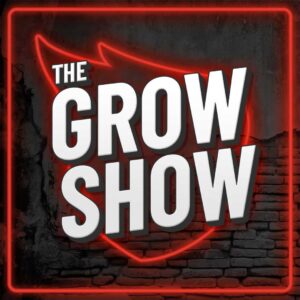Pay-per-click (PPC) advertising remains one of the most powerful tools in digital marketing, offering businesses immediate visibility, targeted reach, and measurable results. However, mastering PPC management requires more than just launching ads; it demands strategic planning, ongoing optimization, and a deep understanding of audience behavior.
This comprehensive guide dives into the essentials of PPC management, equipping marketers and business owners with the knowledge to build, refine, and scale campaigns that deliver maximum ROI. Whether you’re new to PPC or looking to sharpen your skills, this article covers the critical components that make PPC campaigns successful in today’s competitive landscape.
Contents
- 1 Understanding the Fundamentals of PPC
- 2 Setting Up a PPC Campaign That Converts
- 3 Crafting Compelling Ads That Drive Action
- 4 Optimizing PPC Campaigns for Maximum ROI
- 5 Advanced PPC Strategies for Scaling Success
- 6 Common PPC Management Challenges and How to Overcome Them
- 7 Measuring Success and Reporting
- 8 Conclusion: Mastering PPC Management for Sustainable Growth
- 9 Ready to Elevate Your PPC Management?
Understanding the Fundamentals of PPC
At its core, PPC is a model of internet marketing where advertisers pay a fee each time their ad is clicked. It’s essentially a way of buying visits to your site, rather than earning them organically. The most popular PPC platform is Google Ads, but other networks like Microsoft Advertising, Facebook Ads, and LinkedIn Ads offer robust alternatives tailored to specific audiences. Each platform has unique features and targeting options, allowing businesses to reach diverse demographics and psychographics effectively. For instance, Facebook Ads leverage user behavior and interests, while LinkedIn Ads cater to a professional audience, making them ideal for B2B marketing.
Why is PPC so effective? Because it targets users actively searching for products or services similar to what you offer. According to WordStream, businesses make an average of $2 in revenue for every $1 spent on Google Ads, highlighting the potential profitability when campaigns are properly managed. Moreover, the ability to track and analyze performance in real-time allows marketers to make data-driven decisions, optimizing their strategies for maximum return on investment. This adaptability is crucial in today’s fast-paced digital landscape, where consumer preferences can shift rapidly.
Key PPC Terminology to Know
Before diving into campaign management, it’s essential to understand the vocabulary:
- Keywords: Words or phrases that trigger your ads when users search for them.
- Quality Score: Google’s rating of the relevance and quality of your keywords and ads, influencing your ad rank and cost per click (CPC).
- Ad Rank: Determines your ad’s position on the search results page and is based on your bid, Quality Score, and expected impact of ad extensions.
- CTR (Click-Through Rate): The ratio of users who click your ad to those who see it, indicating ad relevance.
- Conversion: The desired action a user takes, such as making a purchase or filling out a form.
The Role of PPC in the Marketing Mix
PPC should not be viewed in isolation. It complements organic search efforts (SEO), social media marketing, and content marketing. While SEO builds long-term authority, PPC delivers immediate traffic and insights into consumer intent. For example, PPC data can inform keyword strategies for SEO and vice versa, creating a synergistic effect that enhances overall digital marketing performance. Additionally, the immediacy of PPC campaigns allows businesses to test different messages and offers quickly, enabling them to refine their approach based on real-time feedback from potential customers. This iterative process not only improves ad effectiveness but also fosters a deeper understanding of the target audience’s preferences and behaviors.
Furthermore, integrating PPC with other marketing channels can amplify brand visibility and engagement. For instance, retargeting ads can remind users who have previously visited your site, encouraging them to return and complete a purchase. This strategy not only boosts conversion rates but also reinforces brand recall, making it more likely that users will choose your products or services when they are ready to buy. The interplay between PPC and other channels, such as email marketing and influencer partnerships, can create a comprehensive strategy that maximizes reach and impact across multiple touchpoints.
Setting Up a PPC Campaign That Converts
Launching a PPC campaign without a strategic foundation is like setting sail without a compass. Successful campaigns start with clear objectives and a deep understanding of your target audience.
Defining Clear Goals
Every campaign should begin with specific, measurable goals. Are you aiming to increase sales, generate leads, boost brand awareness, or drive traffic to a particular landing page? Defining these objectives upfront allows you to tailor your campaign structure, ad copy, and bidding strategies accordingly.
For instance, if lead generation is the goal, focus on conversion tracking and optimize for actions like form submissions or phone calls. If brand awareness is the priority, consider display or video campaigns with broader targeting. Additionally, it’s crucial to set a timeline for your goals. Establishing short-term and long-term objectives can help you gauge performance and make necessary adjustments as the campaign progresses. This approach not only keeps your team aligned but also ensures that you can pivot quickly if certain strategies aren’t yielding the expected results.
Conducting Thorough Keyword Research
Keywords are the backbone of PPC. Using tools like Google Keyword Planner, SEMrush, or Ahrefs, identify keywords that your potential customers are searching for. Pay attention to:
- Search Volume: How often a keyword is searched.
- Competition Level: How many advertisers are bidding on that keyword.
- Cost Per Click (CPC): The average cost to bid on that keyword.
Long-tail keywords often provide higher conversion rates due to their specificity, while broad keywords can drive volume but may be less targeted. Moreover, consider the intent behind the keywords; understanding whether users are looking for information, comparing products, or ready to make a purchase can significantly influence your ad copy and landing page design. Incorporating negative keywords into your strategy can also help filter out irrelevant traffic, ensuring that your budget is spent more effectively on high-intent searches.
Structuring Your Campaign and Ad Groups
Organize your campaigns by product lines, services, or themes. Within each campaign, create tightly themed ad groups centered around specific keyword sets. This structure improves ad relevance, Quality Score, and ultimately reduces costs.
For example, an online retailer selling athletic shoes might have separate campaigns for running shoes, basketball shoes, and casual sneakers, each with ad groups targeting brand names, features, or customer intents. Additionally, consider implementing ad extensions to enhance your ads further. These extensions can provide users with more information, such as site links, call buttons, or location details, making your ads more compelling and increasing the likelihood of clicks. By presenting a well-structured and informative ad, you not only improve your chances of conversion but also create a more engaging experience for potential customers.
Crafting Compelling Ads That Drive Action
Your ad copy is your direct line to potential customers. It must be clear, persuasive, and aligned with user intent. Understanding your audience’s needs and preferences is crucial for creating ads that resonate. By conducting thorough market research and analyzing customer feedback, you can tailor your messaging to address specific pain points and desires, ultimately leading to more effective advertising.
Writing Effective Headlines and Descriptions
Headlines should grab attention and include primary keywords. Descriptions must highlight unique selling points, benefits, and calls to action (CTAs). For example, “Shop Durable Running Shoes – Free Shipping & Easy Returns” combines product benefit with an incentive. Additionally, consider incorporating emotional triggers or urgency in your headlines, such as “Limited Time Offer: Unleash Your Potential with Our Running Shoes!” This not only piques interest but also encourages immediate action from potential buyers.
Experiment with ad extensions such as sitelinks, callouts, and structured snippets to provide additional information and increase your ad’s real estate on the search results page. These extensions can enhance user experience by offering quick access to relevant pages or highlighting special promotions, ultimately leading to higher engagement rates. For instance, adding a sitelink to customer reviews or testimonials can build trust and credibility, making users more likely to click through to your site.
Utilizing Responsive Search Ads
Google’s Responsive Search Ads (RSAs) allow you to input multiple headlines and descriptions. Google’s machine learning then tests different combinations to identify the best-performing ads. This dynamic approach can improve CTR and conversions by tailoring ads to diverse search queries. By leveraging RSAs, advertisers can save time and effort while optimizing their campaigns, as the algorithm continuously learns and adapts to user behavior.
Moreover, utilizing RSAs can lead to insights about which messaging resonates most with your audience. By analyzing performance data, you can refine your ad copy further and develop a deeper understanding of customer preferences. This iterative process not only enhances your current ad campaigns but also informs future marketing strategies, allowing you to stay ahead of the competition and continuously engage your audience with relevant content.
Optimizing PPC Campaigns for Maximum ROI
Launching a campaign is just the beginning. Continuous optimization is critical to ensure your budget is spent efficiently and your goals are met.
Monitoring Key Metrics
Track metrics such as CTR, CPC, conversion rate, cost per acquisition (CPA), and return on ad spend (ROAS). Use these insights to identify underperforming keywords or ads and reallocate budget to top performers.
For example, a low CTR may indicate irrelevant ad copy or poor keyword targeting, while a high CPC might suggest intense competition or a need to improve Quality Score.
Additionally, consider segmenting your data to gain deeper insights. Analyzing performance by device type, geographic location, or time of day can uncover trends that inform your bidding strategy and ad scheduling. By understanding when and where your ads perform best, you can optimize your campaigns to align with user behavior, maximizing your ROI.
Implementing Negative Keywords
Negative keywords prevent your ads from showing on irrelevant searches, saving budget and improving campaign efficiency. For instance, if you sell premium watches, adding “cheap” or “free” as negative keywords will prevent clicks from users unlikely to convert.
Moreover, regularly revisiting and updating your negative keyword list is essential as market trends and consumer behavior evolve. Utilizing tools that analyze search term reports can help identify new irrelevant queries that may have emerged, ensuring your ads remain focused on the most relevant audience. This proactive approach not only conserves budget but also enhances the overall effectiveness of your campaigns.
A/B Testing Ads and Landing Pages
Regularly test different versions of your ads and landing pages to discover what resonates best with your audience. Even small changes in headlines, images, or CTAs can significantly impact performance.
Consider implementing multivariate testing as well, which allows you to test multiple variables simultaneously. This method can provide insights into how different elements interact with each other, revealing combinations that yield the highest engagement and conversion rates. By systematically analyzing these variations, you can refine your messaging and design to better align with the preferences of your target audience, ultimately driving more conversions.
Leveraging Audience Targeting and Remarketing
Modern PPC platforms offer sophisticated audience targeting options, including demographics, interests, and behaviors. Remarketing campaigns target users who have previously interacted with your site, increasing the likelihood of conversion by keeping your brand top of mind.
In addition to standard remarketing, consider utilizing dynamic remarketing, which shows tailored ads featuring products or services that users have previously viewed on your site. This personalized approach can significantly enhance user engagement and conversion rates, as it speaks directly to their interests. Moreover, experimenting with lookalike audiences can help you reach new potential customers who share similar characteristics with your existing clientele, expanding your reach while maintaining a focus on high-quality leads.
Advanced PPC Strategies for Scaling Success
Once foundational campaigns are performing well, advanced tactics can help scale results and outpace competitors.
Utilizing Automation and Smart Bidding
Google Ads and other platforms provide automated bidding strategies like Target CPA, Target ROAS, and Maximize Conversions. These use machine learning to adjust bids in real-time based on auction context, device, location, and other signals, often outperforming manual bidding. By leveraging these automated strategies, advertisers can free up valuable time previously spent on bid adjustments, allowing them to focus on creative aspects of their campaigns. Moreover, as these algorithms learn from historical data, they become increasingly effective at predicting which users are more likely to convert, thereby optimizing ad spend and improving overall ROI.
Expanding to Multi-Channel PPC
Don’t limit your PPC efforts to search engines alone. Platforms like Facebook, Instagram, LinkedIn, and Amazon offer unique targeting and ad formats that can complement your search campaigns and reach different audience segments. For instance, Instagram’s visually-driven platform is perfect for brands looking to showcase lifestyle products, while LinkedIn is ideal for B2B companies aiming to connect with professionals in specific industries. By diversifying your PPC strategy across these channels, you can create a cohesive brand presence that engages users at various touchpoints, ultimately guiding them through the customer journey more effectively.
Incorporating Video and Display Ads
Video ads on YouTube and display ads across the Google Display Network can build brand awareness and nurture prospects through the funnel. These formats are especially effective for storytelling and showcasing product benefits visually. Engaging video content can capture attention in ways static ads cannot, making it easier to convey complex messages or demonstrate product usage. Additionally, utilizing retargeting strategies with display ads can help re-engage users who have previously interacted with your brand, reminding them of your offerings and encouraging them to return to your site to complete a purchase.
Analyzing Competitor PPC Strategies
Competitive analysis tools like SpyFu and SEMrush allow you to uncover competitors’ keywords, ad copy, and budget estimates. Use this intelligence to identify gaps, capitalize on missed opportunities, and differentiate your campaigns. Understanding what works for your competitors can inform your own strategy, enabling you to refine your targeting and messaging. Furthermore, by analyzing seasonal trends and shifts in competitor spending, you can strategically time your campaigns to maximize visibility and impact, ensuring that your ads stand out in a crowded marketplace.
Common PPC Management Challenges and How to Overcome Them
Even experienced marketers face hurdles in PPC management. Recognizing and addressing these challenges early can save time and money.
Managing Budget Constraints
Limited budgets require prioritization. Focus on high-intent keywords and campaigns with proven ROI. Use dayparting to run ads during peak performance hours and geographic targeting to concentrate spend where conversions are most likely.
Dealing with Click Fraud
Click fraud occurs when competitors or bots repeatedly click your ads to drain your budget. Implement IP exclusions, monitor suspicious activity, and consider third-party fraud detection tools to protect your campaigns.
Keeping Up with Platform Changes
PPC platforms frequently update features, policies, and algorithms. Staying informed through official blogs, webinars, and industry forums ensures your strategies remain compliant and effective.
Measuring Success and Reporting
Transparent reporting and data-driven insights are essential to demonstrate PPC value and inform future strategies.
Setting Up Conversion Tracking
Accurate conversion tracking via Google Analytics, Google Tag Manager, or platform-specific pixels is fundamental. Without it, measuring campaign effectiveness is guesswork.
Creating Meaningful Reports
Reports should focus on KPIs aligned with business goals, such as cost per lead, ROAS, and lifetime customer value. Visual dashboards and automated reporting tools can streamline communication with stakeholders.
Using Data to Drive Continuous Improvement
Analyze trends, test hypotheses, and iterate campaigns based on data insights. PPC management is an ongoing process of refinement, not a set-it-and-forget-it task.
Conclusion: Mastering PPC Management for Sustainable Growth
PPC management is a dynamic discipline that blends creativity, data analysis, and strategic thinking. By understanding the fundamentals, setting clear goals, crafting compelling ads, and committing to relentless optimization, businesses can harness PPC’s full potential to drive growth and outperform competitors.
In an increasingly digital world, investing in expert PPC management isn’t just an option — it’s a necessity for brands that want to thrive. Armed with the strategies outlined in this guide, marketers can confidently navigate the complexities of PPC and deliver measurable, impactful results.
Ready to Elevate Your PPC Management?
Mastering PPC is just the beginning. At Abstrakt Marketing Group, we specialize in turning PPC strategies into real business growth, especially for B2B lead generation. Our dedicated team is ready to help you harness the power of PPC to not only meet but exceed your lead generation goals. If you’re looking to achieve sustainable growth and outshine your competition, we invite you to Learn More about how our expertise can amplify your success.

Madison Hendrix
Madison has worked in SEO and content writing at Abstrakt for over 5 years and has become a certified lead generation expert through her hours upon hours of research to identify the best possible strategies for companies to grow within our niche industry target audiences. An early adopter of AIO (A.I. Optimization) with many organic search accolades - she brings a unique level of expertise to Abstrakt providing helpful info to all of our core audiences.
- Madison Hendrix
- Madison Hendrix
- Madison Hendrix
- Madison Hendrix





